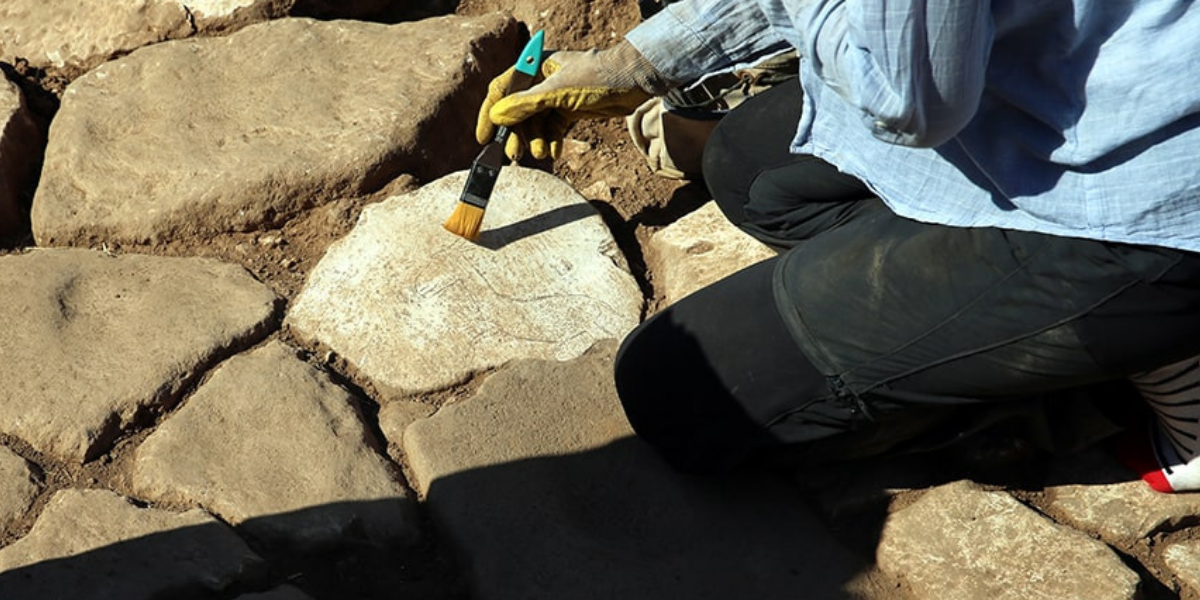
Running wild donkey figure carved into the ground stone discovered in Karahantepe
In Karahantepe, a Neolithic settlement with a history of approximately 12,000 years, a figure of a running wild donkey carved on stone was unearthed.
Karahantepe is considered to be an important turning point in humanity’s transition to settled life
As in Göbeklitepe, T-shaped obelisks were also found in Karahantepe. These obelisks provide important information about the artistic and religious beliefs of the Neolithic people.
During the ongoing excavations in Karahantepe within the scope of the Stone Hills project, (Taş Tepeler) a depiction of a running wild donkey figure was uncovered on one of the stones laid on the floor.
📣 Our WhatsApp channel is now LIVE! Stay up-to-date with the latest news and updates, just click here to follow us on WhatsApp and never miss a thing!!
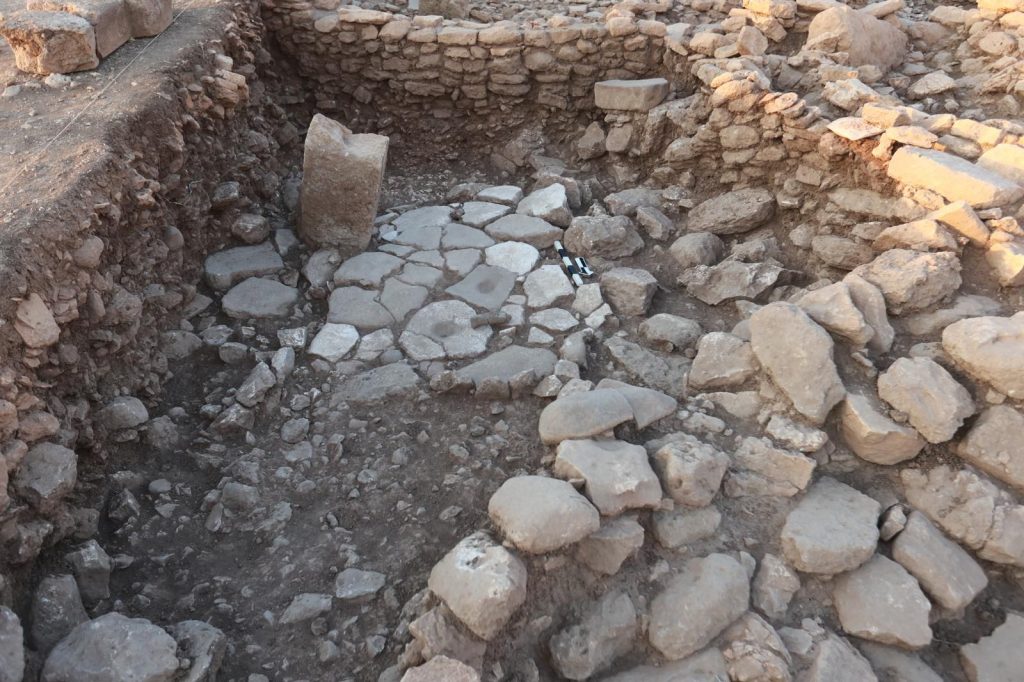
Karahantepe Excavation Head Prof. Dr. Necmi Karul told AA correspondent that they have been working on other public buildings and huts around the central public building in Karahantepe this year and that they started to open one of them a few weeks ago:
“The building is sunken into the ground and has a wattle and daub roof system on a short stone wall. We understand that they paved the floor with large flat stones. Some of these stone pavements were used as grinding stones and on one of them we came across a wild donkey motif. There are animals that are decisive in the iconography of this period.”
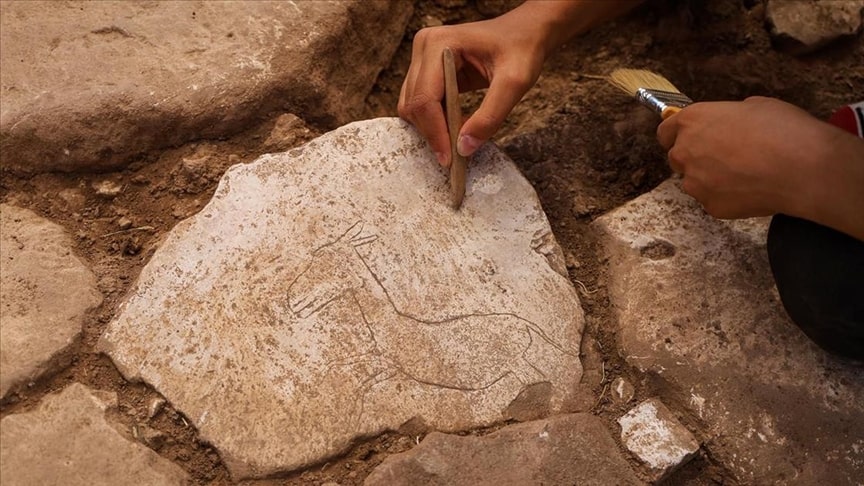
This is the first time a moving wild donkey motif has been encountered
“We divide them into 2 categories. The first one is animals whose eeriness is emphasized, and we see these especially on the obelisks. Another group consists of birds and the most consumed animals, of which the gazelle is the most popular. Other consumed animals include the wild donkey. We can say that these animals were the animals that people were around, consumed and lived with during this period, compared to the scary ones. In a similar way, this wild donkey is a figure placed in a base with grinding stones and carved in motion. In this respect, we have encountered some figures on building bases in Göbeklitepe before, but this is the first time we have encountered such a moving wild donkey motif. This is a find that will contribute a little more to our understanding of animal iconography and the relationship between man and his environment.”
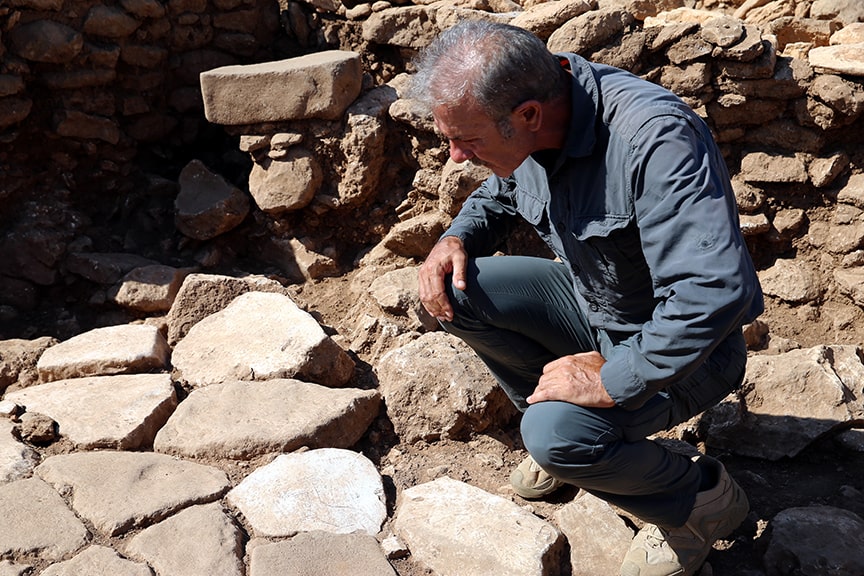
“The donkey figure found is a figure about 20 centimeters long, placed right next to the grinding stone, but rather than its dimensions, the fact that it is mobile and depicted in proportion to the stone on which it is carved is again an indication of the skill of the artists of this period.”
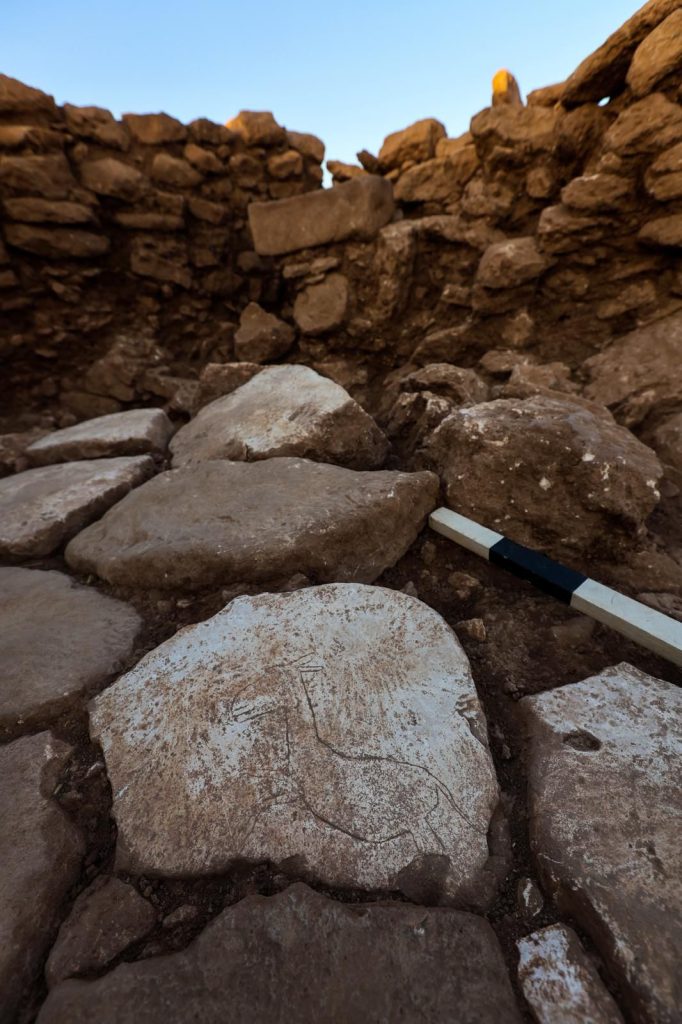
“This is the first time we have encountered a figure on the floors of buildings in Karahantepe. This, of course, indicates that there may be similar ones. We have not yet reached the floor levels of many of the huts mentioned here. We are deepening them in different structures. There are other places where we will reach those levels.”
Cover photo: AA
You may also like
- A 1700-year-old statue of Pan unearthed during the excavations at Polyeuktos in İstanbul
- The granary was found in the ancient city of Sebaste, founded by the first Roman emperor Augustus
- Donalar Kale Kapı Rock Tomb or Donalar Rock Tomb
- Theater emerges as works continue in ancient city of Perinthos
- Urartian King Argishti’s bronze shield revealed the name of an unknown country
- The religious center of Lycia, the ancient city of Letoon
- Who were the Luwians?
- A new study brings a fresh perspective on the Anatolian origin of the Indo-European languages
- Perhaps the oldest thermal treatment center in the world, which has been in continuous use for 2000 years -Basilica Therma Roman Bath or King’s Daughter-
- The largest synagogue of the ancient world, located in the ancient city of Sardis, is being restored











Leave a Reply